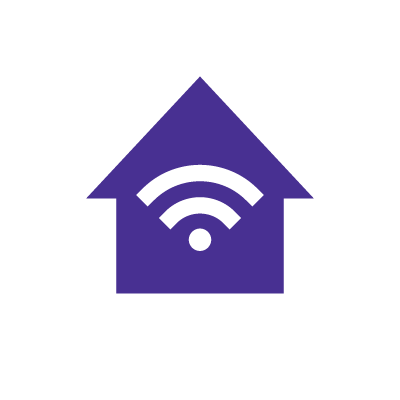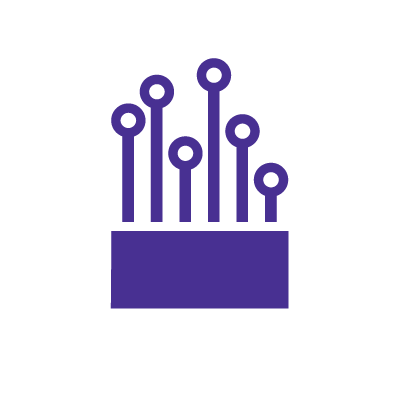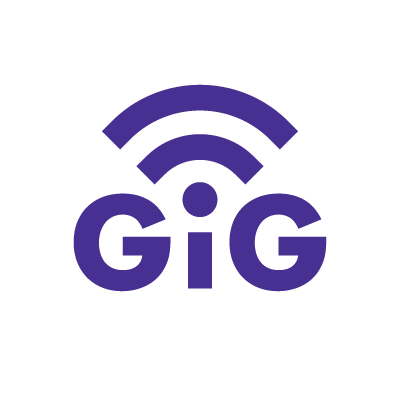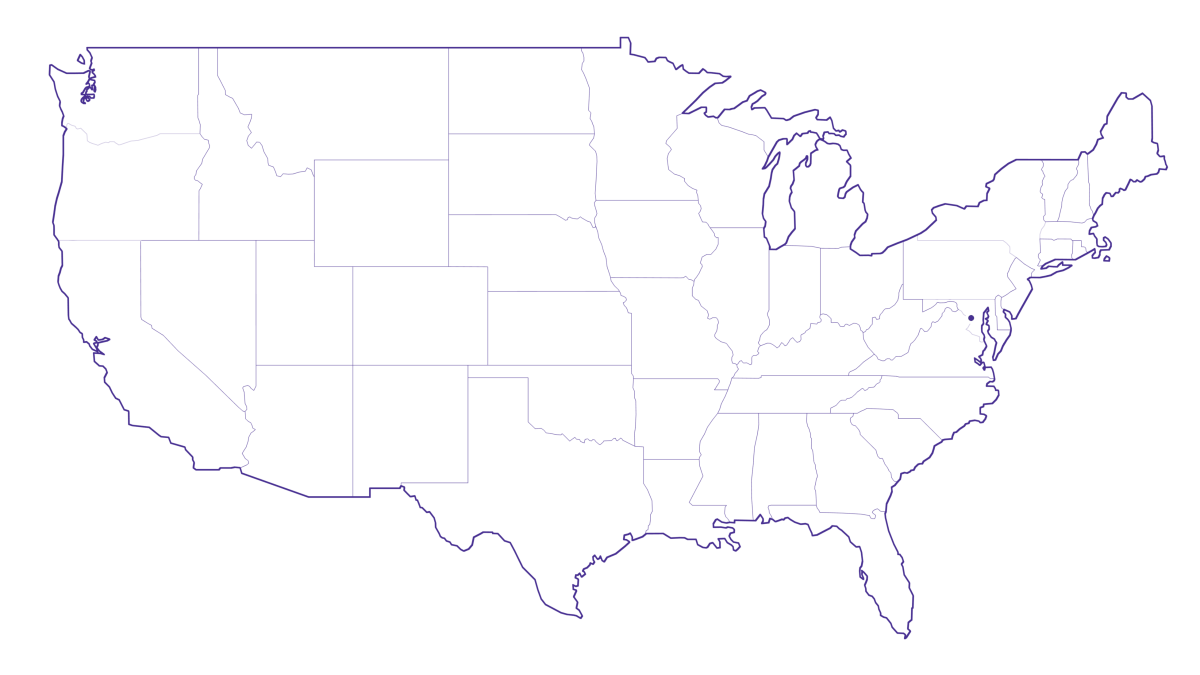WiFi vs internet speeds: Differences explained

If you access the internet and use WiFi, you may have wondered what the difference is between WiFi and internet connections. While not exactly the same, there are some similarities.
In simple terms, your WiFi network provides a wireless connection to your router. The router connects to your modem and then the internet. But how is WiFi interlinked with internet speeds?
If your WiFi speed is slower than your internet speed, then your wireless devices will not receive your full internet speed. It’s important to optimize your WiFi network so it can effectively deliver your internet speed to your connected devices.
Let’s take a deeper look into WiFi vs internet speeds below.
Switch & save
Astound is the #1 cable ISP
Stream live content, work, surf, game and connect to multiple devices with speeds up to 1500* Mbps through our ultra‑reliable fiber‑powered network.*

WiFi speed vs internet speed
WiFi data is digital information that is transmitted over wireless networks using WiFi technology. When you connect your smartphone, laptop or other devices to a WiFi network, you establish a wireless connection to the internet through a router or other access point.
However, WiFi has a limited range. Before connecting to the internet through fiber optics, cable or a cellular network connection, WiFi must transfer data through a wireless router, creating a local network access point.
By connecting your device to the router, whether through a traditional router/modem or by tethering, your device communicates with other devices on the same network and can access the internet.
On the other hand, internet speed is based on how quickly your internet connection can download and upload data (bits).
This speed is measured in megabits per second (Mbps) and Gigabits per second (Gbps) — one Mbps is 1,000,000 bits being transferred per second and one Gbps is 1,000,000,000 bits being transferred per second.
When you access WiFi, you are actually using a wireless connection to access your internet speed and leverage that speed across all your devices.
Below we’ll talk about how to make the most out of your WiFi network and your internet speed.
WiFi that just works!
WiFi plans for any home
Tiny, large or somewhere in between; find WiFi coverage to fit any space. Blanket your entire home with a fast and ultra‑reliable connection.

WiFi
Known as a “wireless networking technology”, WiFi allows devices such as laptops, desktops, mobile devices and other equipment to access the internet.
Over the years, WiFi has evolved to have a few different standards:
WiFi 5
- WiFi 5 was released in 2014.
- It’s the first WiFi standard to provide multiple input/multiple output (MIMO) technology.
- It uses multiple antennas on both sending and receiving devices.
- It has a theoretical speed of 3.5 Gbps.
- It uses the 5GHz band to transmit data, instead of the 2.4GHz band.
WiFi 6 and WiFi 6e
- WiFi 6 was released in 2019 and WiFi 6e was released in 2021. WiFi 6e was optimized from WiFi 6.
- WiFi 6e accesses the 6 GHz radio-frequency band, as well as the 2.4 GHz and 5 GHz frequency bands used by WiFi 6.
- Both releases can reach theoretical speeds of 9.6 Gbps.
- The 6 GHz frequency band is exclusive to WiFi 6e-enabled devices.
- WiFi 6 and WiFi 6e are the most widely adapted standards.
WiFi 7
- WiFi 7 was released in 2024.
- It’s the first WiFi standard to leverage 4K QAM modulation to enable peak speeds and Multi-Link Operation (MLO) to maintain consistent low latency even in congested environments.
- It’s the fastest WiFi at a theoretical speed of 46 Gbps.
- It uses 2.4, 5, 6 and mmWave bands to transmit data.
Even though WiFi is powerful on its own, certain external factors can slow down your WiFi network. For example:
- Distance from the router: You should keep your devices near your router. If you are worried about coverage in your home, look into mesh WiFi systems.
- Using a non-compatible WiFi generation: Make sure your devices support your current WiFi standard.
- Obstacles: Certain materials or physical barriers can affect your WiFi signal, therefore affecting your internet speeds.
- Connected devices: Each laptop, smart or personal device connected to your WiFi network can slow down your speed.
As you can see, many factors influence the performance of your WiFi. If you have a busy household with several wireless devices accessing the internet, your speeds can falter.
Build your plan
Your perfect plan is just a click away
Get the speeds, WiFi, mobile and TV plans you need all at an affordable price. Bundle your services with Astound and see how much you can save.

However, you can increase and improve your WiFi speed.
- Distance: Bring your devices closer to your router, or your router closer to a central area of the home where all devices can access WiFi.
- Blockers: Remove possible blockers in order to allow your WiFi to penetrate all areas of the home.
- Interference: Power down devices like microwaves, baby monitors and cordless phones when not in use. Some of these devices can cause interference.
- Old devices: Check your WiFi version for possible conflicts between other devices which may have improper hardware for your WiFi standard.
- System reset: Reset your WiFi system or power-cycle in order to clear any cached or existing software issues.
- Connections: Check and make sure your cables are connected to your WiFi system.
- Devices: Make sure your WiFi connection can handle multiple devices at the same time.
- Updates: Check online for updates for your equipment and your devices.
Internet
Using Mbps or Gbps as units, “internet speed” is a measurement of the actual rate at which information is downloaded or uploaded from the internet to your devices.
The following things can affect your internet speed:
- Distance from the internet service provider’s central office or data center.
- Types of internet connection, such as cable, DSL or fiber.
- Number of concurrent users on your network.
- Types of devices in use.
- Quality of your area’s internet connection.
- The type of website or online service you’re using, such as streaming video or playing online games.
While many factors can affect internet speeds, the type of internet connection is the biggest factor that influences your online experience.
Here are a few of the most common types of internet connections:
- DSL: This connection receives data via a copper telephone landline, minimizing interference but is generally slower than other types of connections.
- Cable: Faster and more reliable than DSL.
- Satellite: Slower than wired connections, but has wide coverage, especially in rural areas where fiber, cable or 5G home internet is unavailable.
- 5G home internet: 5G home internet uses 5G technologies from wireless cellular networks to deliver 5G internet into the home. Susceptible to interference and available only in populated areas.
- Fiber: The most developed internet infrastructure and provides faster speeds and lower latency than 5G.
Fiber-powered internet
Why Fiber Internet works better
Astound’s fiber-powered internet provides consistent speeds throughout the day versus 5G Home Internet which is prone to intermittency.

After picking your type of internet connection, make sure your hardware is ready to transmit data. This is generally a modem and router.
In order to receive the speed you’re paying for and transmit it within your home, make sure you:
- Place your router in an open location, away from any interfering materials.
- Update your router’s software regularly.
- Secure your home WiFi.
- Be aware of internet throttling, or peak hours.
- Manage your internet activities and upgrade your speed tier if necessary.
Internet speeds by activity
It’s not always easy to determine how much speed you will actually need for your home. Let’s take a look at some of the different activities you may engage in and the speeds needed for each.
For gamers
Each person gaming online needs at least 25 Mbps to 100 Mbps download and 5 Mbps to 20 Mbps upload speeds. When selecting a speed, think about the type of game, the number of players and devices, as well as possible issues like latency, lag or ping.
The internet speeds required for gaming depend on the content of the game you play, the platform you are gaming from (console, mobile, PC) and the number of connected users.
Gaming internet
Get the total gaming solution
How you game is up to you. One thing is clear–you need fast and ultra-reliable internet. Get fiber‑powered internet that delivers Gig speeds no matter what high-bandwidth activity you choose.

For streaming
If you’re streaming media on a livestream or watching HD/4K video across multiple devices, each user in your household will need at least 25 Mbps download and 5 Mbps upload speeds for a smooth experience.
The internet speeds required for streaming depend on the quality of the content you stream, the platform you are streaming from and the number of users connected to the internet connection.
For working from home
To work from home, you’ll need a baseline of 100 Mbps download speed and 10 Mbps upload speed. Video conferencing, large file sharing and streaming media will likely be your greatest concerns when selecting a speed, followed by the number of connected devices.
While some work tasks (like refreshing your email) may be quick, other tasks may be bandwidth-intensive. Your internet speed depends on the availability of bandwidth within your home network.
Find your speed
What speed do you need?
Maybe you just need the essentials—or maybe you need to unleash the ultimate internet speed. Explore your options to get the best experience for every device in your home.

Give everyone a better experience with speeds up to 1500 Mbps from Astound
To roughly calculate the speed you might need for your home, divide the speed you’re considering by the number of devices in your household.
The desired result should be about 35 Mbps per device.
For example, if you have a household of four people, each with their own smartphone and laptop, all accessing the internet at the same time, you may want to consider a plan that provides at least 300 Mbps, meaning about 75 Mbps per user.
However, these numbers also depend on the activities and internet usage patterns of each user on their specific devices. If you have a household of power users, like avid gamers or Netflix bingers, you may want to consider higher speed plans in order to accommodate everyone.
Astound offers ultra-fast internet plans that can be customized to your household’s needs.
When searching for internet speeds, look for the highest Mbps or Gbps for the fastest connection. Discuss your internet needs with your internet service provider to ensure you get the perfect plan for your family
Understanding WiFi vs internet speeds doesn’t have to be complicated. Your internet speed dictates how fast your internet connection is and your WiFi setup brings that speed into your home.
With Astound, you can always choose your speed according to your needs and upgrade at any time – whether you have an increase of devices or users
Create the perfect bundle
Get the speed, WiFi, mobile and TV that’s just right for you.
*Internet speeds may vary & are not guaranteed. Certain equipment may be required to reach advertised speeds. DOCSIS 3.1 modem with 2.5GE physical LAN port is required for 1 Gigabit speeds and higher. See astound.com/yourspeed for why speeds may vary. To view Astound’s FCC Network Management Disclosure see astound.com/policies-disclaimers. Limited time offer, subject to change without notice. Advertised promotional price valid for duration of the stated promotional period from time of service activation. Regular rates apply after promotional period ends. Equipment not included and is extra. Modem required for Internet service. Enhanced Wi-Fi or Whole Home Wi-Fi (eero) not included and is add’l. Offer includes a monthly discount for enrollment in both automatic payments (autopay) & paperless billing (e-bill). Discount of $10 applies with automated bank account deduction or a discount of $5 applies with automated credit/debit card payment. Valid email address required. Must complete enrollment in autopay and e-bill within 30-days of placing the order. Without enrollment, the discount does not apply. Discount appears on bill within 3 bill cycles after enrolling. If either autopay or e-bill is canceled, services are changed, or the account is not in good standing, then the monthly discount will be discontinued. Offer valid only for new residential Astound customers or previous customers with an account in good standing who have not had Astound service within the last 60 days. Any add’l services, equipment, premium channels & other tiers of service are subject to an add’l charge & regular increases. A one-time activation fee of $14.99 (in addition to any installation fees) will be charged & is subject to change. Add’l fees apply for taxes & surcharges, and are subject to change. WA RESIDENTS: unless otherwise specified, price does not include a 2% Regulatory Administration Fee. For details about taxes, fees & surcharges visit astound.com/fees. No early termination fees apply in the event service is terminated in advance of the promotional end date. Customer is responsible for any accrued service charges in the event service is canceled. Subject to credit check. Not all services & speeds are available in all areas. A multi-product discount may be available to qualifying addresses with a subscription to mobile, TV, and 600 Mbps Internet or higher. Discounts will be reflected in your order cart at time of purchase, if available. Other restrictions may apply. All services are governed by the Astound Customer Terms & Conditions that can be found at astound.com/policies-disclaimers. © 2025 Radiate HoldCo, LLC d/b/a Astound Broadband. All rights reserved.
While we have made every attempt to ensure that the information contained in this site has been obtained from reliable sources, Astound is not responsible for any errors or omissions, or for the results obtained from the use of this information. All information in this site is provided “as is”, with no guarantee of completeness, accuracy, timeliness and without warranty of any kind, express or implied, including, but not limited to warranties of performance, merchantability and fitness for a particular purpose. Certain links in this site connect to other websites maintained by third parties over whom Astound has no control. Astound makes no representations as to the accuracy or any other aspect of information contained in other websites.
eero Plus is available for an additional $9.99/month and requires subscription to whole home WiFi powered by eero.

















